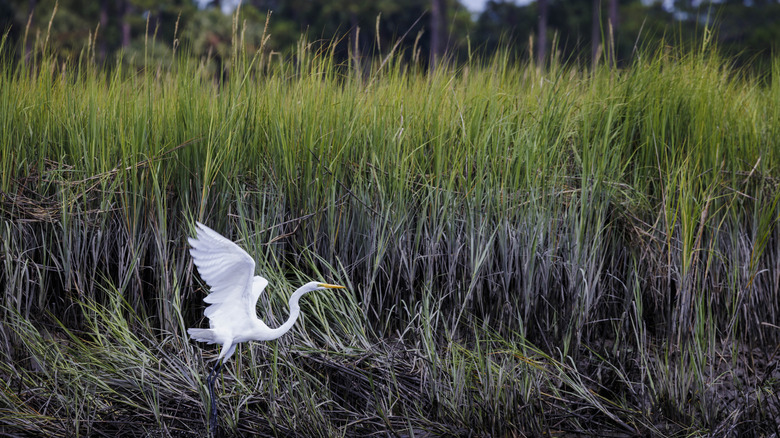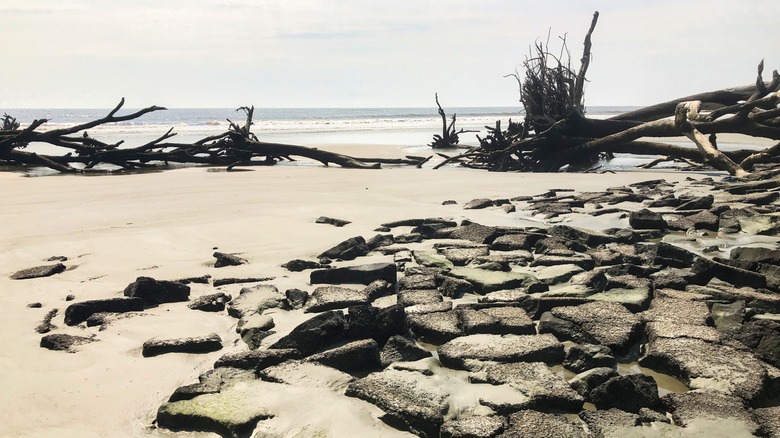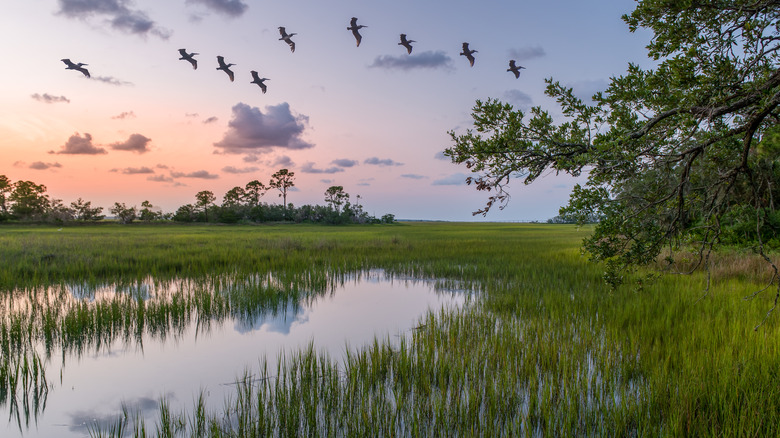South Carolina's Undeveloped Barrier Island Promises A Pristine, Quiet Escape Full Of Wildlife
It may seem cliché that a dreamy, naturalist's heaven accessible only by boat is a private island once owned by a billionaire, although it may surprise you that this exclusive paradise is off the coast of South Carolina, of all places. However, this island is no longer owned by a billionaire, nor is it still private. In fact, St. Phillips Island is now a public state park and remains arguably the most pristine barrier island along the Southeastern U.S. seaboard. Ted Turner, a wealthy American media mogul, bought St. Phillips, one of several barrier islands in the area, in 1979, and built his family a private, five-bedroom vacation home there. During his 40-year ownership, Turner maintained St. Phillips under a conservation easement with the Nature Conservancy, actively ensuring that nothing would harm or alter the natural landscapes. In 2017, Turner sold his island to South Carolina in what LandReport called the "Conservation Deal of the Year" for $4.9 million, only about one-third of the property's value, so that the state could acquire it and preserve its natural environments.
Today, South Carolina maintains St. Phillips, along with nearby Hunting State Park, an unsung South Carolina beach paradise, and these Lowcountry barrier islands are a haven for native flora and fauna. The island, just off the coast of Beaufort, South Carolina, one of the happiest seaside towns in America, is accessible only by boat, and it has a number of gorgeous trails that wind through its tiny, 4,680-acre, biodiverse landscape. It's considered one of South Carolina's six National Natural Landmarks, part of the National Parks Service, and is one of only a handful of barrier islands along the Southeastern coastline that is virtually untouched by human development. For a day of peace in nature, St. Phillips is the place to go.
Lowcountry South Carolina is a nature-lover's Paradise
Lowcountry refers to coastal South Carolina, as well as parts of coastal Georgia and North Carolina, which all have borders on the Atlantic Ocean. Lowcountry Carolina has a culture all its own, from landscape to biodiversity to food to flavor and more. While perhaps the heart of Lowcountry Carolina is Bluffton, an underrated town with a vibrant community and food scene, St. Phillips, in its pristine preservationist state, could perhaps be considered Lowcountry's wildlife mecca, with a thriving, biodiverse environment full of wildlife and foliage. During Ted Turner's ownership of St. Philipps, he restored habitats of local species while carefully landscaping paths to traverse the area but not disturb plants and animals.
Take a day trip to St. Phillips to escape the humidity of inland South Carolina and you'll have a high chance of seeing any of the 250 native species there: loggerhead sea turtles, indigo snakes, American alligators, dolphins, fox squirrels, bobcats, and plenty of birds from roseate spoonbills to painted buntings to bald eagles. St. Phillips' 4-mile land mass contains legendary imagery, like the massive, mature oak and magnolia forest draped in yards of sagey Spanish moss, a salty marsh with tall grasses in sucking, sandy mud, and a "boneyard beach" filled with towering, bone-like driftwood and dead trees bleached by the salt and sun. The salt marsh estuary is considered one of the most productive ecosystems in the world, filtering pollutants and bringing in nutrients while protecting inland areas from flooding and coastal areas from erosion.
How to get to St. Phillips
The only way to get to St. Phillips is by boat, and there are several companies that will arrange transport and eco-tours for you. The best way to get there is a six-hour tour via St. Phillips Island Ferry out of nearby St. Helena Island, operated by Charleston-based Coastal Expeditions in conjunction with the South Carolina State Parks. The company offers eco-friendly tours to St. Phillips as well as private charters, dolphin tours, and other activities. You'll take a 30-minute ferry ride from St. Helena Island, guided by a naturalist who will recount the local history and ecology during your ride. Once on St. Phillips, you'll take a guided overland tram to the Turner home and get dropped off to wander at your own pace.
There are no cars, businesses, or places to stay overnight on St. Phillips, unless you want to rent the Turner House, Ted Turner's former 3,350 square-foot, five-bed and five-bath vacation residence. The custom, rustic mansion still stands and rents for $12,000 per five-night stay (the minimum), or you can rent the island and the house exclusively for $20,000 for five nights (includes golf carts!). There is, however, camping available nearby on Hunting Island.
Charleston International Airport is the closest major airport, but it will still take you about two hours to drive to St. Helena Island. The closest airport to St. Phillips is the smaller Hilton Head Island Airport, about an hour's drive away from St. Helena Island. From St. Helena Island, you can catch the St. Phillips Island Ferry.


